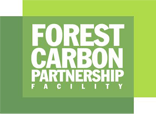10August 2018
The workshop has been attended by a highly diversified team (54 participants) from the different States. the workshop was inaugurated by the Coordinator of SESA, Director of Protection and Safety Unit of the Civil Defense and General Director of NCR, National REDD+ Coordinator, Facilitator, General Director of FNC
Objectives
The main objective was to identify environment and social impacts of the t REDD+ strategy options, propose mitigating measures where negative impacts are anticipated and propose measures to enhance the potential positive social and environment impacts of the proposed strategy options. Additional objectives of the consultations were to inform stakeholders of REDD+ and the SESA process and also endorse stakeholder’s views on causes of deforestation and forest degradation and their proposals to address them.
Recommendations
- FNC has introduced the sustainable management of forests and this should be applied in other sectors so as vast areas incorporate forest lands.
- Design of projects should comply with regulations of the World Bank.
- The strategy should make changes in the existing commercial agriculture in order to incorporate more forest belts (i.e the strategy should address the biological aspect).
- Consultation of politicians is important in the study (it might have devastating effects)
- Devises are important in adoption of alternative energy
- Forest belts could be used as safe livestock routes.
- In the forest sector, the private sector should be included in the strategy and loss of timber during harvesting should be reduced.
8. in the agricultural sector of the strategic options, use of organic fertilizers to reduce emissions
- Implementation of the forest laws regarding the 5 and 10% is important.
- The study should make use of the Accessand Benefit Sharing (ABS) law.
- Alternative options for stabilization during mining requires cooperation between the sectors working in the environment and National Petroleum Company.
- Change of policy behavior that income comes from wood cutting to gum Arabic. Therefore, there should be kind of integration between REDD+, FNC and policy.
- There should be verification of the REDD+ project.
- Because the Gum Arabic Belt incorporates many activities such as agriculture, forests and mining, there should be more emphasis on the development of the gum Arabic belt in all relevant States.
- To spare more land for forests, adoption technologies (such as zero tillage) in commercial agriculture should be adopted.
16 . Use of technologies (e.g. fodder in the su mmer) in the animal sector will relief pressure on forest lands.
- To reduce pressure on forests, herders should be encouraged to adopt intensification of animal production (i.e. decrease animal number and increase output/ unit).
- For the study to be comprehensive, it should include decision makers.
- For ideal situations, the study should take into consideration of the successful forest management in Blue Nile and Darfur State.
20.In States with fragile soils (e.g. North Kordofan) and the fact that 90% of the gum Arabic belt is owned by local community, policies should include regulations in use of implements and land use map. Involving local people is of para amount for sustainable forest management. This has produced excellent management systems such as the Taungya
- Because land use is considered a social risk, the land use system should be clear and there should be more emphasis on land tenure.
- A decision on stopping the expansion of commercial agriculture needs to be taken.
- Funding could be based on the success of the forest belt.
- Because pasture is concentrated in safe areas (e.g. agricultural areas), expansion of animal routes is necessary to decrease pressure on agriculture.
- Supply of improved stoves is recommended as local people are not aware of using cooking gas.
- Re afforestation of range trees.
- Reduction of dispute on land tenure.
- Surveying all sectors that are involved in tree cutting outside protected forests and use of GRM to solve disputes.
- Use of culture diversity in setting the strategic options is important since in some cases, intervention of the government creates negative impact.
- Since the five strategic options are interrelated, there should be coordination between them and to come up with one comprehensive strategy.
- Because alternative energy does not exceed 20% while 80% of the energy comes from the biomass, there should be a sustainable energy source. This could come from cultivation strategy.
- Since strategic options assess the impact on end users, the invitation of all relevant politicians (e.g. Ministers of Agriculture and Forestry, Environment and Natural Resources, Higher Counsel of Environment) is important.
 English
English العربية
العربية 



